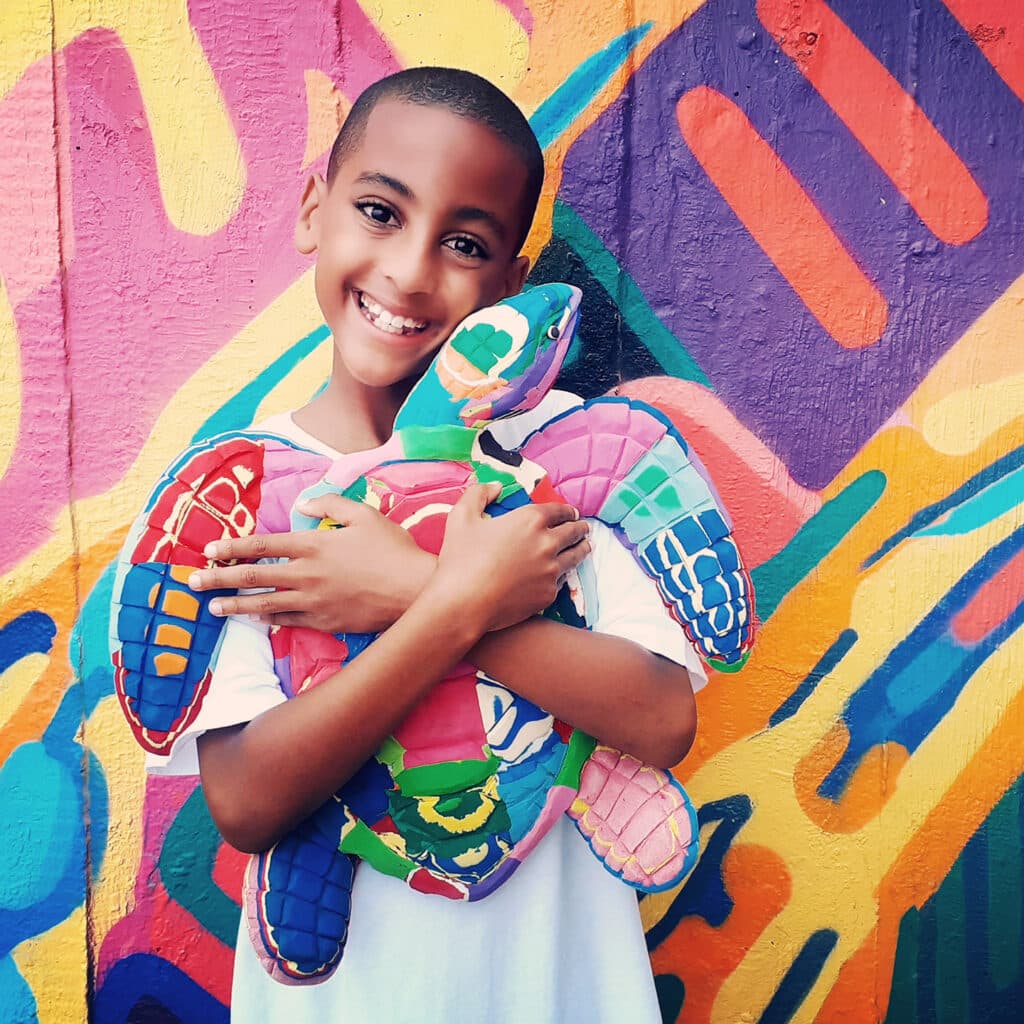A South African Earth Guardian
Meet Romario, a 12-year-old boy truly committed to the environment. His actions to save biodiversity near his home and beyond started when he was 6 years old and put himself in an orca's perspective.
Biography
Name: Romario Valentine
Born: 2011
Lives: Durban, South Africa
Hobbies: I love cleaning beaches, planting trees, and making art.
Twitter.com/ArtistRomario
Romario Valentine from Durban is a true ambassador for the environment, or an eco-warrior as he calls himself. He is cleaning beaches near his home. He is crowdfunding to save endangered birds, and he’s growing his own garden. It all started with a school play.
The term "eco-warrior" is a self-description of someone who is committed to save the environment from harmhul activities. The Swedish equivalence of the term would be "miljökämpe".
“I’ve always cared for nature and biodiversity. When I was six, I participated in a school play as an orca. After doing research I discovered the damage pollutants were doing to orcas and other sea creatures, like turtles. This could lead to their extinction and cause an imbalance in the ocean’s ecosystem. That was when I started my beach clean-ups,” says Romario.
Ever since, he regularly goes to the beach, often together with his parents, and collects plastic. By the end of March 2023, he had completed 305 beach clean-ups. A recycling company takes care of the plastic he has picked up.
Campaigning for penguins and albatrosses
It is not only sea creatures that are threatened by extinction. Romario has also started conservation campaigns to help birds that are on the so-called Red List.
“Instead of presents, I asked my mum to help set up a crowdfunding campaign for my ninth birthday. It was in the middle of Covid and the local avian sanctuary in Durban needed support,” Romario says.
He wanted to help some of South Africa’s endangered birds such as the African penguin, the southern ground hornbill, and the albatross.
“Another crowdfunding campaign I started is for the restoration of bird habitat on Marion Island in the Indian Ocean. There is a problem with invasive mice on the island. The mice eat the birds’ eggs, but I know that it’s possible to get rid of the mice and save the birds. The money raised in this campaign goes to the Mouse-Free Marion Project.”
Before starting your own campaign, it is important to find out which animals most need your help, explains Romario. Look up the Red List, which sorts species from Least Concern (plentiful in the wild) to Extinct (died out).
Planting for pollinators
A garden full of flowers is a good start to make sure that smaller animals also thrive. Besides plenty of flowers, Romario has planted tomatoes, beans, rocket, thyme, onions, lettuce, and carrots in his garden.
“Bees and butterflies love flowers. Bees are great pollinators, and our food production depends on them. That is how important they are. To support bees, you can plant flowers that they like, such as lavender.”
Bug hotels are also a great help for insects. Romario is also busy setting up a nice, big bird feeder to attract birds. He likes a garden full of wildlife.
“But when I planted sunflowers, that didn’t work out so well. The monkeys ate them all. And the sweet potatoes that I’ve planted don’t want to grow. Perhaps there are not enough nutrients in the soil. Sometimes you try and fail, but don’t give up,” he says.
Calling for young people and politicians to take action
“If you want to become an eco-warrior, start by setting small goals. You are never too young to take care of nature, because when you take care of nature, you take care of yourself.”
Romario would like to see more youth involvement in the global discussions on nature and climate.
“Youth should be considered more in long-term environmental solutions. I think there should be an International Children’s Tree Planting Day when all children in the world plant trees together with their communities and schools. Just imagine the impact it would have. I also think politicians should take part. They must stop talking and start digging,” says Romario.
Climate zones in South Africa
- There are many climate zones in South Africa. The country has a long coastline (2,800 kilometres) that influences much of the climate. On the west coast is the cold Atlantic Ocean, and on the south and the east coast is the warmer Indian Ocean.
- The northwest of the country is hot and dry, especially during the summer months: December, January, and February. This area can be described as desert or semi-desert.
- The southwest of the country is the only region with a Mediterranean climate. In the summer it is dry and sunny. The winter months are rainy, with temperatures between 7 and 18 degrees. It is very windy in this part of the country.
- The eastern coast has a subtropical climate with warm, summer rains and plenty of sunshine. It is very green and lush.
- In the centre of South Africa is a plateau with milder summers and cold winters, but it rarely snows.
Going wild in South Africa
- You can visit public beaches to go swimming and surfing.
- There are many trails for trekking. You can find nature trails along the beaches, in the mountains, and through forests. Some trails are very popular, and you need to book a trail-pass in advance.
- Camping, birdwatching, and trekking are popular outdoor activities in South Africa. There are many campsites all over the country where you can pitch a tent or park your caravan. Some campsites are privately owned. Many of the campsites run by the government are set up in national parks.
- Wild camping is not possible (and generally not safe).
Text: Görrel Espelund.
